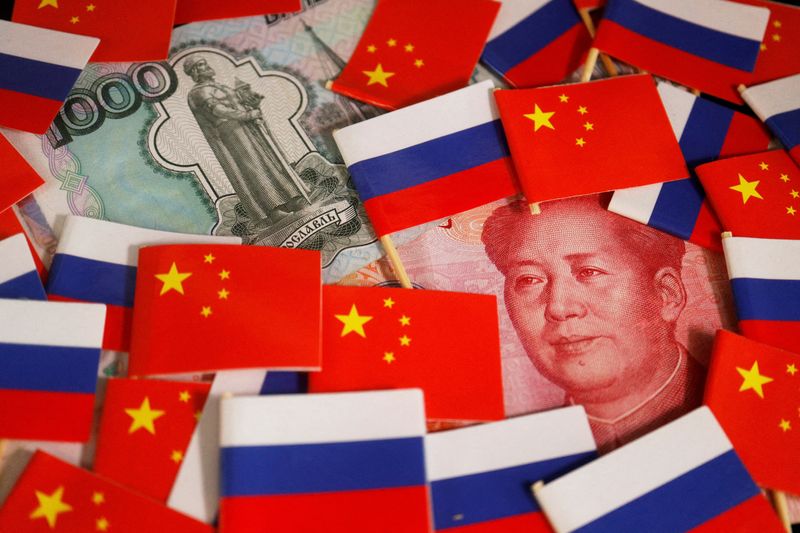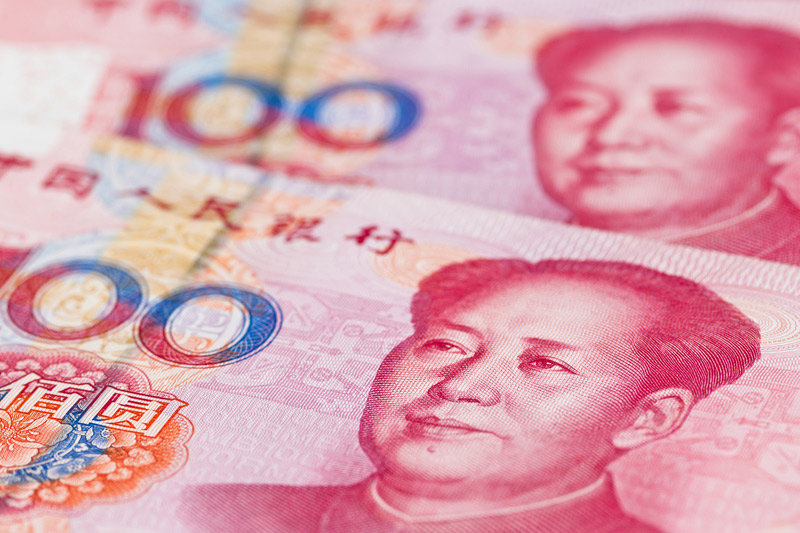By Elena Fabrichnaya
MOSCOW (Reuters) – The impending expiration of a U.S. license allowing transactions involving the pillars of Russia’s financial infrastructure could make it harder and more expensive for Russian companies to do business, sources involved in imports and payments said to Reuters.
The yuan, which hit a nearly one-year high against the ruble on Wednesday, has become Moscow’s most traded foreign currency since Russia’s decision to send troops to Ukraine in February 2022 led to sweeping Western sanctions and a ramp-up of the Russian foreign exchange. -dollarization policy.
With Chinese banks wary of the secondary sanctions risks of dealing with Russian entities blacklisted by Washington, and the Bank of Russia reluctant to continue pumping yuan liquidity through currency swaps, some importers fear that payment problems between Russia and China could worsen.
“The situation may change after October 12,” a person involved in importing told Reuters. “An abrupt yuan shortage or a complete refusal to accept payments from Russia by Chinese banks is possible.”
LIQUIDITY SHORTAGE in YUAN
The U.S. Treasury Department’s Office of Foreign Assets Control (OFAC) imposed sanctions in June on the Moscow Exchange and its clearing agent, the National Clearing Center (NCC), leading to an immediate halt to dollar and euro trading on the largest stock exchange in Russia.
OFAC has issued a permit, which expires Oct. 12, authorizing the settlement of certain transactions. OFAC did not respond to a request for comment on whether another renewal of the license was possible.
Afterwards, all conversion transactions, including those of subsidiaries of Chinese banks, will be halted and all open currency positions through the Moscow Exchange will be closed and halted, a person in the payments market said.
“Accordingly, the situation with the supply of yuan liquidity will become even more difficult,” the person said.
Payments worth billions of yuan are being suspended as Chinese state-owned banks halt transactions with Russia, Reuters reported last month, with many transactions facing lengthy delays, higher logistics costs and higher brokerage fees.
Complicating matters further, the Russian unit of Austria’s Raiffeisen Bank International has refused to make payments to China since September, a person familiar with the matter said.
RBI declined to comment.
SYSTEMIC RISK
The central bank has acknowledged the payment problems and urged commercial lenders to reduce their yuan loan portfolios, saying this will worsen the yuan liquidity shortage by forcing the central bank to replenish short-term yuan inventories, pushing up swap rates and market volatility increases.
“The central bank is trying to somehow stop the yuan shortage as the swap rate reached 120% last week,” said Finam brokerage analyst Alexander Potavin, describing the risk as systemic for Russia’s largest companies.
Central bank data show banks cut their swap loans to 15.4 billion yuan ($2.19 billion) on Wednesday, after a peak of 35.2 billion yuan in early September.

“If yuan trading on the Moscow stock exchange is really canceled, there will be no stock exchange benchmark for the ruble,” Potavin said. “Yuan rates will be formed based on the results of transactions in the interbank market, which is completely non-transparent, manipulable and volatile.”
($1 = 7.0184 Chinese Yuan Renminbi)


